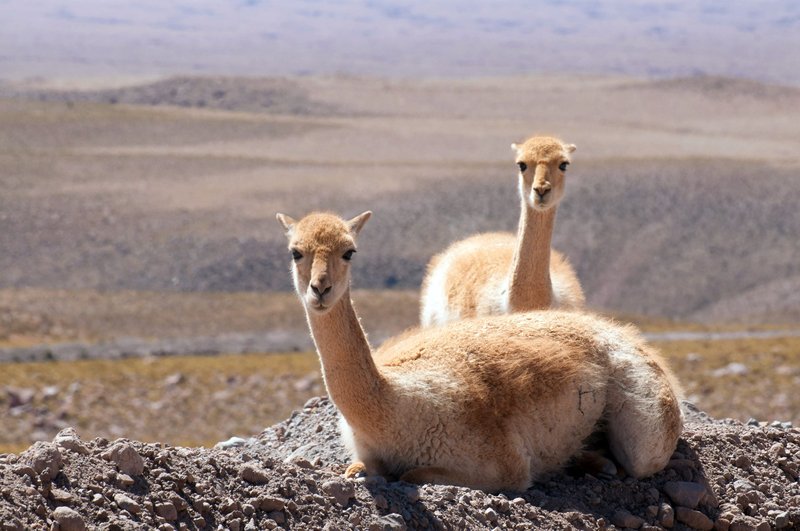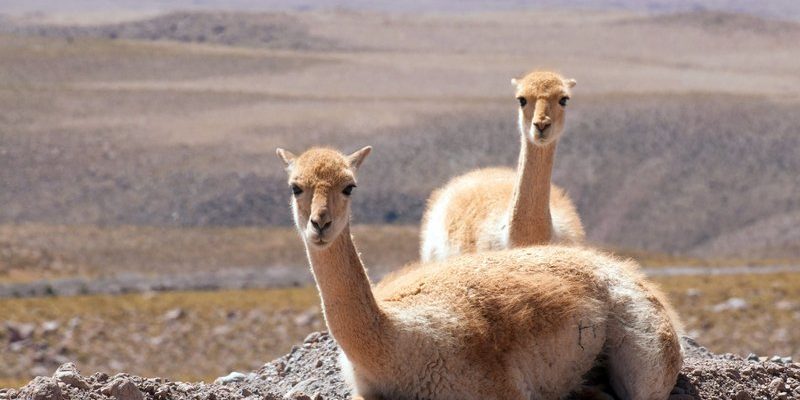
This article explores the fascinating ways vicuñas survive in their harsh habitats. From their unique physical features to their social behaviors, we’ll dive into the secrets that allow them to flourish where other animals might struggle. So, grab a warm drink, and let’s chat about how these delicate creatures manage to thrive against the odds.
Living High: The Vicuña’s Mountain Habitat
Vicuñas call the high-altitude regions of the Andes home, often living at elevations above 10,000 feet. This is a place where the air is thin, temperatures can plummet, and weather can shift from sunny to snowstorm in a heartbeat. You might wonder how any creature could endure such extremes. Here’s the thing: vicuñas have adapted in remarkable ways to make this their perfect playground.
For starters, vicuñas have a specialized respiratory system. At high altitudes, there’s less oxygen available, but vicuñas have larger lungs and more efficient blood circulation than many other animals. This means they can take in oxygen effectively, even when it’s scarce. It’s kind of like how you’d breathe deeply after running a race—they can do this almost naturally in their high-altitude home.
Additionally, their bodies are covered with a thick layer of fleece. This isn’t just any fleece—it’s incredibly fine and warm, allowing them to stay cozy in freezing temperatures. Picture wearing the softest, warmest sweater you have on a chilly night, and you’ll get a sense of how their fleece works to keep them insulated.
The Art of Foraging in a Harsh Landscape
Finding food in the Andes can be a challenge, especially with rocky terrain and harsh conditions. Vicuñas are herbivores that primarily eat grass and other vegetation. But here’s the twist: they have a finely-tuned sense of what to eat and when.
In the high-altitude ecosystem, vicuñas graze on specially adapted plants, like certain grasses that thrive in rocky soil. These plants are packed with nutrients, which helps the vicuñas stay healthy despite their sparse diet. It’s like knowing exactly which snacks are best when you’re on a long road trip—vicuñas can find the best “snacks” in their environment.
Moreover, these animals are known to forage during the warmer parts of the day. They adapt their feeding schedule to take advantage of the sun’s warmth, avoiding the coldest parts of the night and early morning. You might even see them grazing in groups, which adds an element of safety, as they can keep watch for any potential predators together.
Water: The Precious Resource
Water is essential for survival, but in the high-altitude Andes, it’s not always easy to come by. Vicuñas are smart about how they manage their need for hydration. They often get moisture from the grasses they eat, making every mouthful count.
During the rainy season, they’ll also drink from small streams or puddles that form on the mountainsides. Picture them as savvy campers who know the best spots to fill their canteens. Additionally, their bodies have adapted to conserve water. They don’t sweat much, which helps them stay hydrated longer, even when the temperatures rise during the day.
Interestingly, vicuñas can also tolerate dehydration better than many other animals. They don’t need to drink as often, relying on their diet to supply necessary fluids. You might say they’re nature’s little survival experts when it comes to managing their water intake.
Social Behavior: Community and Survival
Vicuñas are social animals that often live in family groups, typically consisting of a male, several females, and their young. This structure is not just for fun; it’s a crucial survival strategy. Living in groups helps them protect each other from predators like pumas and foxes.
When you see a group of vicuñas, there’s a strong sense of cooperation among them. They often take turns watching for danger while others eat. This behavior is similar to how friends might look out for each other on a hiking trip—staying aware of their surroundings while enjoying the journey.
Additionally, vicuñas communicate with each other through a series of whistles and body language. When one senses danger, it can sound a warning that alerts the entire group. It’s a natural alarm system that illustrates the power of teamwork in the animal kingdom.
Adaptations to Climate Change
Like many creatures today, vicuñas face challenges from climate change. Their high-altitude habitats are becoming increasingly unpredictable, with changes in temperature and rainfall patterns. This leads to food shortages and affects their delicate ecosystem.
Vicuñas are resilient, but they have to adapt continually to these shifts. For instance, researchers are studying how their foraging habits change with new plant growth patterns. You might think of it as adjusting your recipe when you can’t find your favorite ingredient—vicuñas are learning to be creative in the face of change.
By maintaining their unique adaptations and social structures, vicuñas can continue to thrive. They’re not just surviving; they’re showing us how to adapt and work together, no matter how tough the circumstances become.
Conservation Efforts: Protecting the Vicuña
As we learn more about how vicuñas survive, it’s essential to think about how we can help protect them. Conservation efforts are underway to preserve their habitats and ensure these incredible animals continue to thrive. Organizations focus on managing their natural environments, regulating hunting, and educating local communities about the importance of vicuñas.
You might be wondering how you can help. Supporting sustainable practices in regions where vicuñas live can make a significant impact. This includes buying products that are ethically sourced and supporting eco-friendly tourism that respects local wildlife. Just think of it as doing your part in a team, helping these beautiful animals succeed in their homes.
In conclusion, the vicuña is a remarkable example of survival against the odds. From ingenious adaptations to their social structure, they show us how even the most delicate creatures can thrive in harsh environments. By understanding and supporting conservation efforts, we can help ensure that vicuñas continue to grace the Andes for generations to come.

